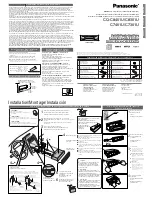
Yatai Inverter YTB-S-LT User’s Manual
of the converter at the beginning of spinning (Spindle Empty). Along with the changing of the spinning
length, the frequency is also decreasing as well. If the machine halts without full yarn, then the target
frequency at operation of the next time is just the frequency at the time of machine halt. The Stopping
Frequency refers to the frequency of the spindle full, as shown in Figure A.
When control with frequency increasing progressively, the Stopping Frequency refers to the target
frequency of the converter at the beginning of spinning (Spindle Empty). Along with the changing of the
spinning length, the frequency is also increasing as well. If the machine halts without full yarn, then the
target frequency at operation of the next time is just the frequency at the time of machine halt. The Starting
Frequency refers to the frequency of the spindle full, as shown in Figure B.
For instance, if the Starting Frequency is 60Hz and the Stopping Frequency is 40Hz, then along with the
changing of the spinning length (this moment the
radius of spindles also gradually increase and the velocity of
the spindle is also increasing; if operating with a fixed frequency then it is possible to form the spindle in the inner
loose and outer tight state), the relation between the operating frequency and the yarn velocity is shown as Figure A;
if the starting frequency is 50Hz and the Stopping Frequency is also 50Hz,
the relation between the
operating frequency and the yarn velocity is shown as Figure C.
5 0 H Z
4 0 H Z
0
时 间
4 0 H Z
0
时 间
5 0 H Z
0
时 间
A
C
B
纱
线
速
度
0
时 间
C
纱
线
速
度
0
时 间
纱
线
速
度
0
时 间
时间
Time
;
纱线速度
Yarn Velocity
From
Figure A
it can be seen that if operating is in decreasing progressively from the Starting Frequency to
the Stopping Frequency, the velocity of the yarn is intended to stable. From
Figure C
it can be seen that the
















































